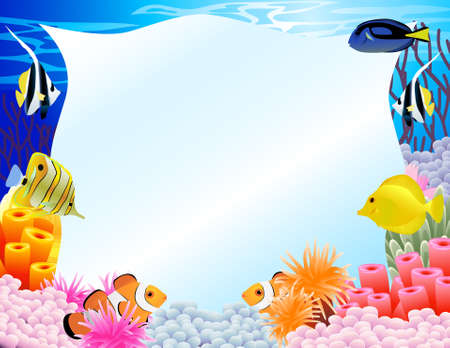1. Understanding Bukaad: The Local Perspective
If you’ve ever wandered along the sun-baked coasts of Maharashtra or Karnataka, you might have heard seasoned fishers sharing stories of “Bukaad” roads and reels under the shade of coconut palms. But what exactly is Bukaad, and why does it matter to our coastal fishing life? Let’s take a relaxed dive into this unique world that blends tradition, ingenuity, and the rhythm of the Indian shoreline.
Bukaad isn’t just a word—it’s a vibe felt in every local angling session by the water. In many Indian coastal communities, “Bukaad” refers to improvised fishing methods, tools, and sometimes even the winding little roads leading to secret angling spots. These are not your fancy imported reels or smooth asphalt highways, but rather homemade wooden spools, recycled bits of nylon line, and rustic trails carved out by generations of fishers heading towards their daily catch.
In villages like Ratnagiri or Gokarna, Bukaad reels are cherished for their simplicity and effectiveness. Crafted from whatever materials are handy—old bicycle wheels, sturdy branches, discarded plastic—they carry with them stories of jugaad (that beautiful Indian knack for creative solutions) and resilience against tough tides. The Bukaad road is often nothing more than a sandy path that weaves past mangroves and rice paddies, connecting families to their ancestral fishing grounds.
So when we talk about Bukaad in the context of Indian coastal fishing, we’re really talking about the soul of local angling—the friendships forged over shared bait, the laughter echoing as nets are cast at dawn, and the deep respect for the sea’s gifts. It’s a tradition where every scratch on a reel or bend in a road tells its own fishy tale.
Understanding Bukaad means appreciating not just the tools themselves but also the quiet wisdom passed down through generations. It’s about embracing a way of fishing that’s as much about patience and observation as it is about skill—something every coastal angler knows by heart.
2. The Indian Coastline: A Fisher’s Playground
India’s coastline is a true treasure, stretching over 7,500 kilometres and offering a rich tapestry of fishing environments. From the serene backwaters of Kerala, where coconut palms sway lazily above tranquil waters, to the rugged charm of the Konkan coast with its rocky outcrops and sandy shores, every region has its unique flavour—and its own fishing traditions. For local fishers, this diversity means there’s no “one-size-fits-all” approach when it comes to choosing fishing gear like bukaad roads and reels.
The backwaters in Kerala, for instance, are famous for their slow-moving, brackish waters teeming with prawns and pearl spot (karimeen). Here, light tackle and smaller bukaad rods make sense—think easy casting from a country boat or even from the banks under a banyan tree. On the other hand, the surf-filled beaches of Andhra Pradesh or the rocky jetties along Goa demand sturdier setups that can handle strong currents and bigger catches like pomfret or mackerel.
Let’s take a closer look at how different coastal environments shape the way Indian fishers choose their gear:
| Region | Water Type | Common Fish Species | Preferred Gear |
|---|---|---|---|
| Kerala Backwaters | Brackish | Prawns, Karimeen | Light bukaad rods & reels |
| Konkan Coast (Goa/Maharashtra) | Rocky/Sandy Sea | Mackerel, Pomfret | Medium-heavy rods, strong reels |
| Andhra Pradesh Beaches | Sandy Surf | Pomfret, Croaker | Long surfcasting rods, sturdy reels |
| Tamil Nadu Estuaries | Muddy Estuary | Mullet, Catfish | Shorter rods for casting from banks/boats |
This variety isn’t just about adapting to different fish species—it’s also a reflection of India’s cultural richness. Whether you’re sharing chai with fellow anglers on a jetty in Ratnagiri or swapping fish tales at dawn in Kanyakumari, each setting offers its own lessons on what works best. In short: the Indian coastline is not only a fisher’s playground but also a living classroom where tradition meets innovation with every cast of the bukaad rod.
![]()
3. Suitability of Bukaad Roads & Reels for Indian Waters
Picture this: the sun is stretching over the Arabian Sea, casting a golden glow over coconut trees as our small group of anglers sets out from a sleepy Goan village. We’re not just here for a lazy Sunday — we’re testing the buzz around Bukaad rods and reels, curious to see if they truly match up with India’s vibrant coastal waters and the variety of fish that call them home.
First, let’s talk practicality. The Indian coastline is no stranger to unpredictable weather — sudden monsoon showers in Kerala or salty breezes sweeping across Odisha. Here, your gear needs to be tough, not just pretty on Instagram. The Bukaad rods, I noticed, have a solid backbone yet are surprisingly lightweight — perfect for quick casts into swirling estuaries teeming with mangrove jacks or robust catfish lurking under muddy currents. Even when we got tangled up with an enthusiastic barramundi near Chennai, the reel’s drag was smooth and didn’t give up mid-fight (unlike some imported ones that buckle under pressure).
Durability is another big deal for us desi anglers. Saltwater eats through cheap metal faster than you can say “machhli pakdi!” One old-timer in our crew, who’s fished these waters since Indira Gandhi’s time, gave Bukaad’s corrosion-resistant finish a good look. After a few weeks of regular use — salt spray and all — he was impressed that it still spun like new, with no squeaks or stubborn handles.
But what about versatility? Our rivers and seas are alive with everything from silver pomfrets in Mumbai’s creeks to monster rohus in the Ganga. I tried switching lures and baits throughout the day; the Bukaad rod adapted well, whether we were flicking small spoons for mullet or chucking heavy sinkers into deeper surf for snapper. It never felt too stiff nor too flimsy — a rare balance that really suits our unpredictable waters.
The appeal isn’t just technical, though. There’s something quietly satisfying about using gear built with local fishing culture in mind. The comfortable grip fits nicely in hands calloused by years of riverbank stories and chai breaks. And when a curious fisherman at the jetty asked about my setup in Hindi, I could proudly tell him it was made for Indian conditions.
If you ask me or any angler who has spent enough dawns chasing fish along India’s coastlines and rivers, Bukaad rods and reels offer a genuine blend of practicality and character — tools that don’t just survive but thrive amid our unique mix of salt, silt, and spirited stories.
4. Comparing Traditional Gear vs. Modern Bukaad Trends
If you wander down the beaches of Kerala at sunrise or stroll along the Konkan coast, you’ll see a lively mix of old and new: weathered hands mending hand-woven nets while a younger lot fiddles with their shiny Bukaad rods and reels. This blend isn’t just about gear—it’s a reflection of changing times and stories passed from one generation to another. Let’s take a relaxed look at how traditional fishing methods stack up against the new Bukaad wave, with some spice from local tales and experience.
Traditional Fishing Methods: Rooted in Culture
Traditional fishing, whether it’s the cast nets in Andhra Pradesh or the bamboo poles in Tamil Nadu, is almost an art form. The techniques are learned by watching fathers, uncles, and neighbours—often over many cups of chai by the water. It’s slow, methodical, and steeped in patience. Old-timers swear that the fish “know” who’s handling the net, and there’s a certain pride in catching dinner using nothing but muscle memory and tide wisdom.
Bukaad Rods & Reels: The Buzz of Innovation
Meanwhile, Bukaad rods and reels have brought in a bit of thrill to coastal fishing—especially among youngsters looking for a quick catch and some Instagram-worthy action. With lightweight rods, colourful lures, and reels that sing when you land a big pomfret, these setups are all about convenience and excitement. You might hear anglers debating at a tea stall: “Arrey bhai, manual net may be tough, but this Bukaad reel saves my back!”
A Side-by-Side Comparison
| Feature | Traditional Gear | Bukaad Rod & Reel |
|---|---|---|
| Learning Curve | Years (passed down) | Weeks (with YouTube help!) |
| Cost | Usually low (local materials) | Medium to high (imported parts) |
| Cultural Value | High (community pride) | Growing (popular with youth) |
| Catch Variety | All-rounder (nets good for many species) | Best for specific targets (game fish) |
Stories from the Coast
I remember Uncle Ravi from Mangalore telling us how his father could read the sea like an open book—no fancy gadgets needed! But now his own son brags about landing barramundi with his Bukaad rod faster than it takes to boil Maggi noodles. There’s room for both styles; after all, what matters most is sharing laughter under coconut trees with friends as you swap stories about ‘the one that got away.’ That’s the true spirit of Indian coastal fishing—blending tradition with just enough modern twist to keep everyone hooked.
5. Tales from the Tide: Real Stories from Indian Fishers
Let’s set our nets aside for a moment and soak in some coastal stories, straight from the heart of India’s fishing communities. If you’ve ever wandered through a bustling fish market or shared chai with local fishers on a lazy afternoon, you’ll know that tales flow as freely as the tides. So, how do Bukaad roads and reels truly play out when it’s just the fisherman, the sea, and a hopeful sunrise?
From Mumbai’s Mazagaon to Mangalore’s sandy stretches, every fisher has an opinion about these much-talked-about Bukaad innovations. Hari Bhai, who’s been navigating the creeks near Alibaug since his school days, swears by the Bukaad reel for its smooth drag and sturdy build—especially during those feverish monsoon runs when pomfrets seem to leap into your boat. “Arre, this reel makes even a small catch feel like a big one!” he laughs, balancing his bidi between stories.
But not every tale is a smooth sail. In Kanyakumari, Maya Aunty, with her weathered hands and sharper wit, grumbles about the new Bukaad road built close to her village. “It’s good for tourists who want selfies, but for us? When trucks pass, they scare away the prawns!” she chuckles, though there’s a hint of real frustration beneath her laughter. Many fishers agree that while better roads mean easier market access, sometimes it comes at the cost of peace—and prized fishing spots.
Anecdotes from Kerala’s backwaters add another flavour. Young Ajith and his friends use Bukaad reels for midnight catfish expeditions. They love bragging about how many kilos they haul in before sunrise. But when asked if they’d swap their old wooden boats for something flashier to suit the new roads? “No chance! These boats are our grandfather’s gift—Bukaad reels or not, tradition holds tight.”
And then there’s Sandeep Uncle from Odisha, who hosts impromptu ‘fish fry’ parties right where the new Bukaad road meets the estuary. He claims the best use of that smooth tarmac is for drying nets and letting kids race their bicycles after a long day at sea—a different kind of reel life altogether!
So whether these Bukaad upgrades are making waves or just ripples depends on whom you ask—and which coast you’re standing on. The stories are as salty as the spray and just as refreshing: some packed with praise for easy travel and reliable reels, others tinged with nostalgia for quieter shores. One thing’s certain—the Indian coastline is alive with both adventure and gentle debate over what really helps (or hinders) a fisher’s daily catch.
6. Are Bukaad Roads & Reels Here to Stay?
As the waves continue to sing their ancient songs along our Indian coasts, it’s time to reflect on whether Bukaad rods and reels will truly become a staple in the tackle box of every desi angler. Fishing traditions are evolving faster than a Mumbai local at rush hour, with old-school handlines and bamboo poles gradually making space for modern gear. The younger generation, fuelled by YouTube vlogs and Instagram Reels, is eager to experiment with anything that promises bigger catches and epic stories for chai-time.
But will Bukaad rods and reels carve out their own legacy here, or remain just another trend? The charm of Bukaad gear lies in its blend of sturdiness and user-friendliness—a sweet spot that appeals to both seasoned fishermen from Kanyakumari and weekend warriors casting lines off Goa beaches. Many coastal communities appreciate that these rods can handle our spicy monsoon currents and the occasional surprise from under the surf, like a wild catfish or a feisty pomfret.
However, there’s more than just performance to consider. Price tags matter—especially when the daily catch decides whether there’s fish curry or just rice on the table. If Bukaad brands manage to keep their reels affordable without skimping on quality, they’ll likely earn loyal fans from Kerala’s backwaters to Odisha’s river mouths. Accessibility through local tackle shops and language-friendly instructions (yes, we all know someone who needs a Hindi or Tamil manual) could tip the scales further in their favour.
The Indian fishing scene is also embracing eco-friendlier practices—think catch-and-release selfies instead of overfishing trophies. If Bukaad can match this spirit by offering sustainable materials or easy repairs, they’ll win not just hearts but also respect from coastal elders who have seen many trends come and go like the tides.
So, will every desi boat soon have a Bukaad rod leaning against its edge? It might not happen overnight, but with adaptability woven into its design, this gear has a fighting chance to become as familiar as spicy Maggi during a rainy fishing trip. As long as Bukaad keeps listening to our unique Indian needs—be it salt-resistant reels for Gujarat’s shores or lightweight combos for Bengal’s creeks—they may just secure their spot in our ever-evolving fishing story.
For now, let’s keep our lines in the water and see where the tide takes us. Whether you’re an old hand who swears by coconut oil on your reel or a city newbie dreaming of your first mackerel selfie, one thing’s for sure: India’s angling scene has plenty of room for stories—and perhaps, for Bukaad too.


